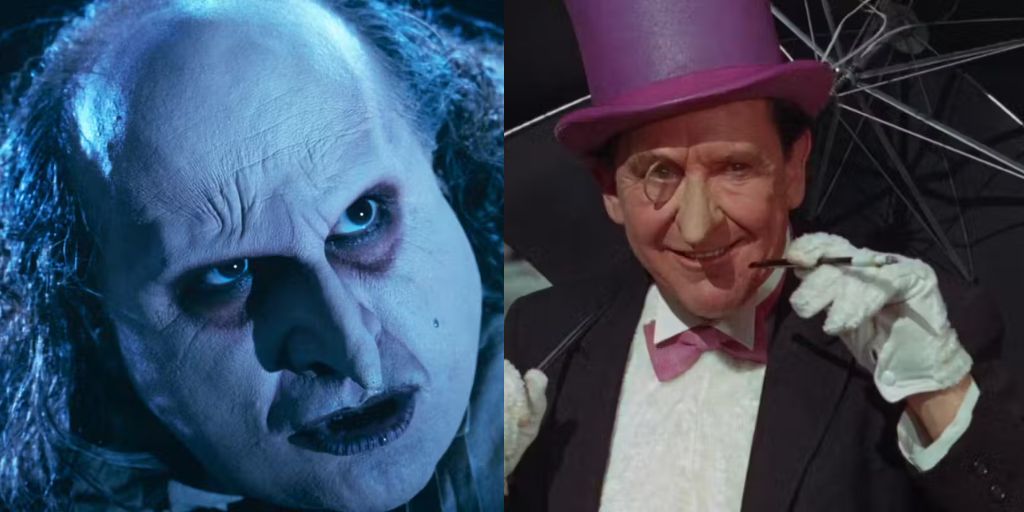Colin Farrell’s amazing performance, combined with the prosthetics and makeup, stands out as one of the strongest parts of The Penguin.
In almost every scene, Oz Cobb’s tough and magnetic personality pulls us into the dangerous gangster world, making it an exciting yet frightening trip through Gotham’s dark side.
Like much of Matt Reeves’ version of The Batman, Oz Cobb’s nickname, “The Penguin,” is grounded in his noticeable limp.
This limp causes the large man to walk with a painful, waddle-like motion. Farrell’s portrayal of this limp offers a fresh take on the character, setting him apart from the comic book version.
The limp adds more depth to the character by being a physical and emotional reminder of why he’s called “The Penguin.”
His limp leads some to disrespect him, while others admire him. It is this very limp that shapes him into The Penguin and makes him such an intriguing character.
Oz Cobb’s Limp Isn’t From the Comics
In the original comics, Oswald Cobblepot’s nickname comes from childhood bullying due to his love for birds and his unfortunate appearance.
However, in other versions, like Robin Lord Taylor’s portrayal in Gotham, a limp explains his penguin-like appearance.
In The Penguin, Farrell’s version makes this limp a visible and painful problem. This change immediately makes him feel tougher than previous versions, who were often shown as mentally sharp and creepy but not physically threatening.
This shift isn’t the only thing that makes him stand out from the comics. It’s also a key reason why the limp plays such an important role in this version of the character.
Oz Cobb is a shortened form of the comic version’s full name, Oswald Cobblepot.
The showrunners wanted a more “grounded” version of the character, and the name change helps achieve that. Shortening Cobblepot to Cobb removes the sense of wealth and power that the name might suggest.
Instead, we see Oz’s mother, Francis (played by Deirdre O’Connell), living in a small suburban home, giving the character a more working-class background.
Along with the limp, it suggests that Oz didn’t have much help with his condition, adding to the challenges he faced from birth.
Colin Farrell’s Acting and Prosthetics Highlight the Pain of Oz’s Limp
Farrell’s acting, along with the prosthetics and makeup, makes Oz’s limp look painful and brutal.
In The Penguin, we first see this when Oz and Victor Aguilar (Rhenzy Feliz) carry Alberto’s (Michael Zegen) body after catching Victor trying to break into Oz’s car. Oz mentions that carrying the body hurts his leg, and later, we see a brace on his foot when he climbs stairs.

In a later scene, Oz removes the brace, revealing twisted, conjoined toes. The showrunners confirmed that Oz has a clubfoot.
The sound of the heavy brace being removed, along with the creaking noises, paints Oz as an outcast living with constant pain. Seeing Oz’s limp earlier in the series makes the reveal even more powerful and painful.
Oz Cobb’s Limp Shows His Struggles in The Penguin
Oz’s limp is more than just a physical condition. It’s a reminder of the struggles he faces while trying to rise as a kingpin.
Sofia Falcone (Cristin Milioti) points this out when she underestimates him. Similarly, Alberto taunts Oz, telling him he’ll never be loved and mocking him with the comment, “handsome guy like you.”
This is similar to the story of Beauty and the Beast. Oz’s apartment, located above a jeweler’s shop named Burgess Jewelry, references actor Burgess Meredith, who played the Penguin in the 1960s Batman TV show.
The apartment also has vault-like doors that Oz uses to close off his bedroom, symbolizing how he locks himself away from the world.
Before taking off his brace, Oz shuts these doors, massages his foot, and pulls out a single ring, linking his limp to his ability to dominate the underworld.
While some underestimate him due to his limp, it also earns him respect, especially from those who have faced hardship.
For instance, Oz refuses to sit in a handicapped seat when riding the Gotham subway. This shows how he views himself — not as weak, but as someone who lives with and overcomes his limp every day.
He also seeks to help those who are less fortunate, similar to how he admired Rex Calabrese for doing the same. This moment earns Victor’s respect, marking the beginning of the two characters’ growing bond.
Oz Cobb’s limp is firmly rooted in the gritty reality of Matt Reeves’ The Batman universe. It differs from the comic book origin to make Oz a tougher enemy for his rivals. By making the limp a painful, constant reminder of how people underestimate him, the show adds more depth to the character.
This is further enhanced by the detailed prosthetics and Colin Farrell’s powerful performance as Gotham’s gangster. More than just a scar, Oz’s limp has shaped him into a figure worthy of respect.

Oz Cobb’s limp is more than a physical ailment—it’s a core element of his character’s evolution. In a world where power and dominance often come from brute strength, Cobb’s limp forces him to adapt and rise above his physical limitations. It not only shapes how others see him but also how he sees himself.
His refusal to be defined by his impairment, combined with his clever mind and resilience, makes him a formidable adversary in Gotham’s criminal world.
Farrell’s portrayal brings this transformation to life, making The Penguin a compelling and fresh take on a classic Batman villain.





